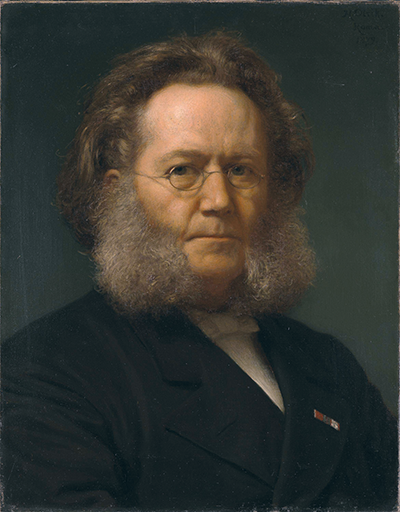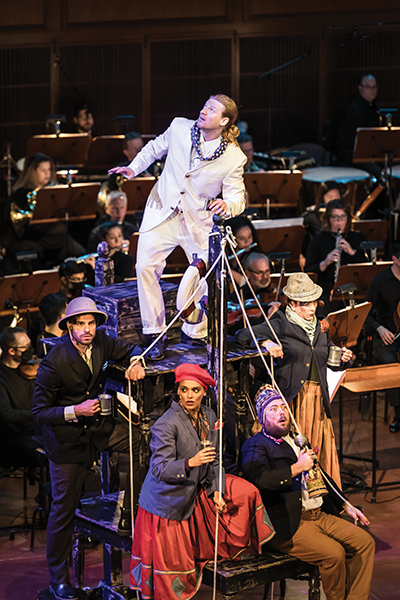Bill Barclay discusses how he reshaped Grieg’s Peer Gynt for the modern concert hall
by Ken Smith
Back in 1876, Peer Gynt marked an historic collaboration between two of Norway’s most illustrious artists, but in practical terms the marriage didn’t last. Edvard Grieg’s music went on to become a wordless favorite on the concert stage, while most revivals of Henrik Ibsen’s play do away with Grieg’s score altogether. Writer/composer Bill Barclay cites the cause of divorce as “irreconcilable differences.”

“No one today would dare to do Ibsen and Grieg together the way the play first premiered,” says Barclay, whose staging mediates an artistic reconciliation. “Ibsen’s story is febrile, long, massively unedited. It would take nearly five hours and require forces that no theatre would support. Our version, on the other hand, fits on the second half of a concert program.”
First commissioned by the Boston Symphony Orchestra, Barclay’s staging starts with the music—not just Grieg’s two concert suites but also additional incidental music rediscovered in the 1980s—then judiciously adds bits of Ibsen’s text to relate the story, theatrically seasoned with staging, lights, costumes and a bit of puppetry.
“I call this ‘concert-theatre,’ because we put music and theatre on equal footing,” he explains. “When music is subservient to theatre, there’s a class system with actors above the musicians. When drama is subservient to the music, as with opera, everything serves the score but you’re not locked into the story the way you are with a great movie or play. Here, the actors retreat when the music is front and center, and when the orchestra slips into incidental music the actors enter and color the story in real time.”

Originally a popular dramatic poem, Peer Gynt has always suffered as a play script, Barclay says. “At its heart, this is an unstageable tale spanning some 60 years and encompassing the greatest hits of Norwegian folklore,” he says. “There are dramatic gems and fabulous comic impulses, but there’s no way to realistically portray hundreds of child trolls and an underground monster. But putting this in the concert hall, where the protagonist is definitely the orchestra and chorus, we have to use our imagination anyway.”

Although Ibsen’s play has seen a resurgence in recent years, it rarely uses Grieg’s original score—usually because those productions find a modern archetype for Ibsen’s capitalistic, self-aggrandizing title character. “Most directors want to free themselves from the 19th-century formula that Ibsen and Grieg created,” he says. “If you have a contemporary setting, you’re probably going to use rock, or electronic dance music, or even country. You might use Grieg’s music ironically—throw in bits of In the Hall of the Mountain King—but if you reconceive Peer as, say, a rock and roll star, you’re probably not going to reach for Anitra’s Dance.”
For Barclay, though, the original partnership is mostly the point. “By rewriting Ibsen’s work myself, I can condense the story points to establish the setting Grieg was trying to portray,” Barclay says. “I think it’s possible to recreate the incredible collaboration between these two titanic figures, using as much of the original material as possible, but distilled and reshaped to fit our needs in the concert hall today.”